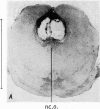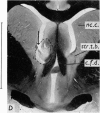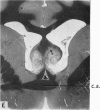Full text
PDF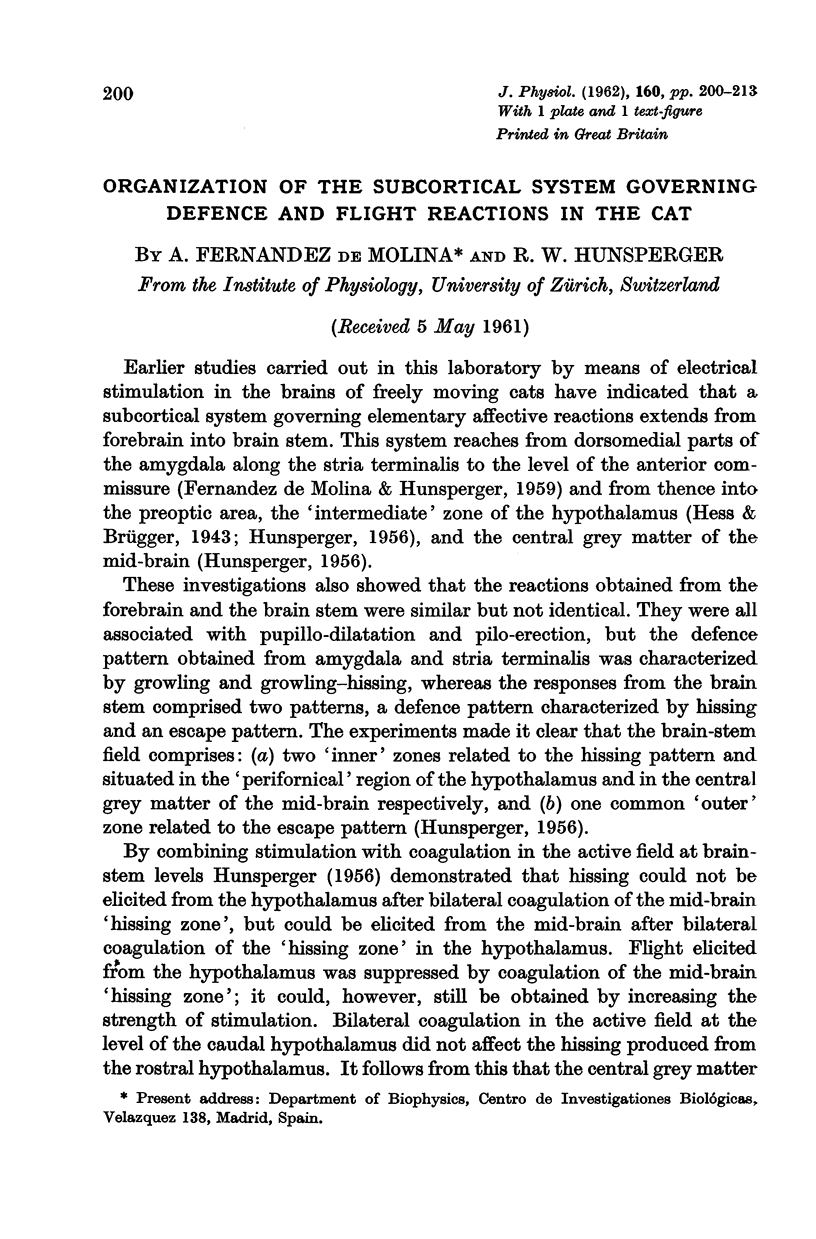
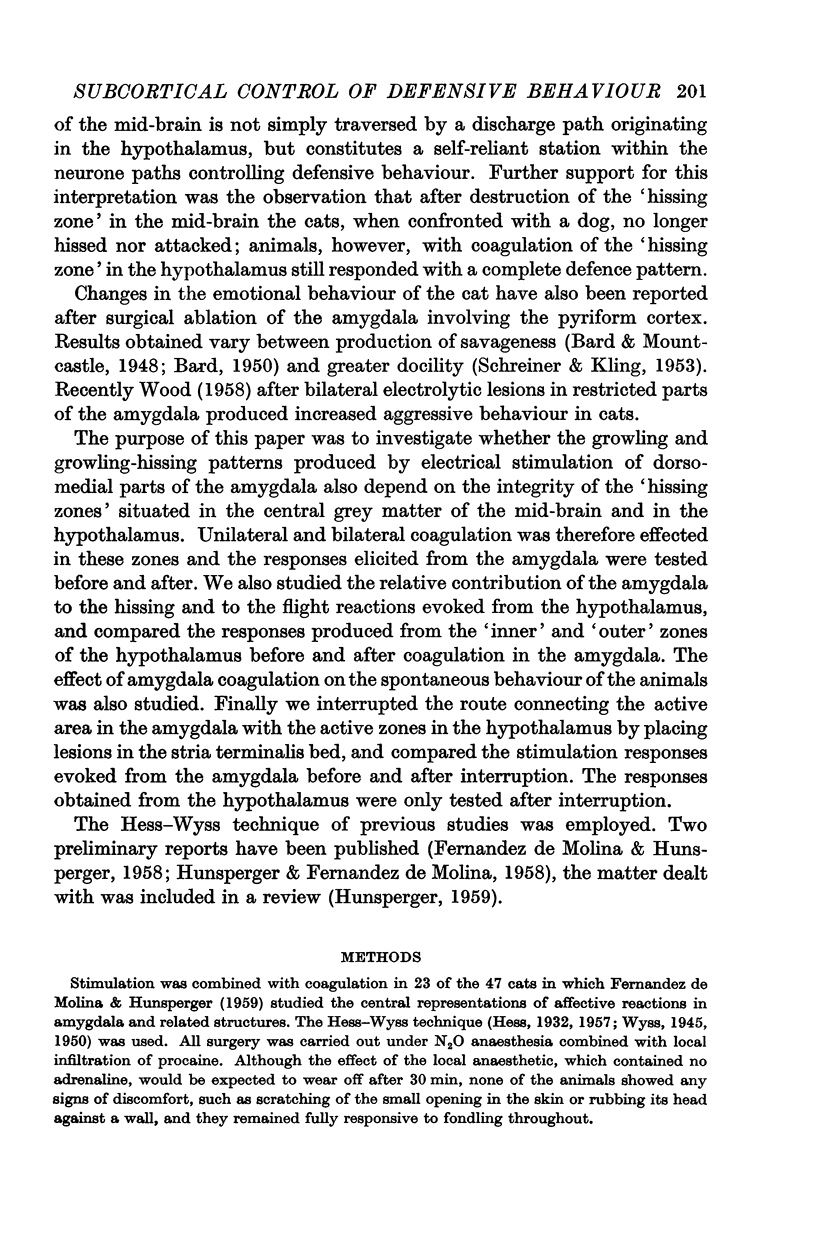
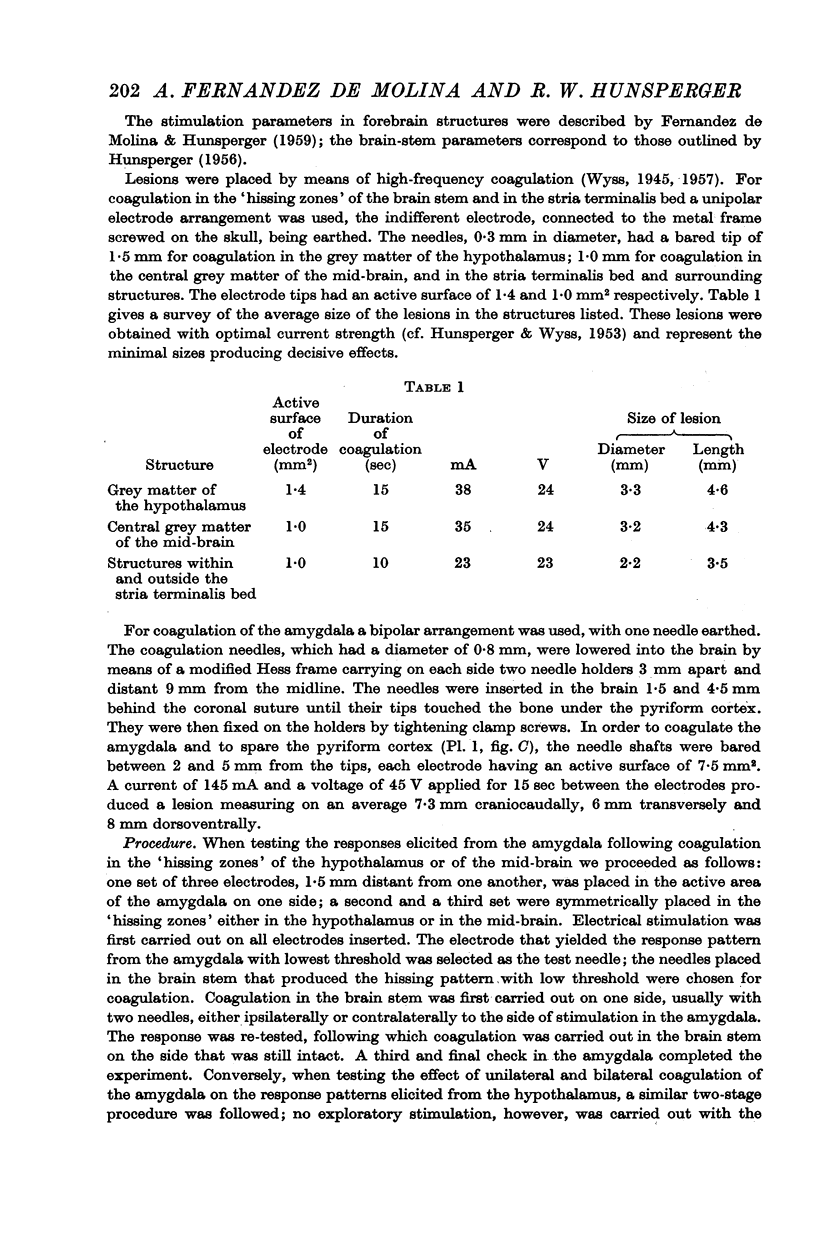
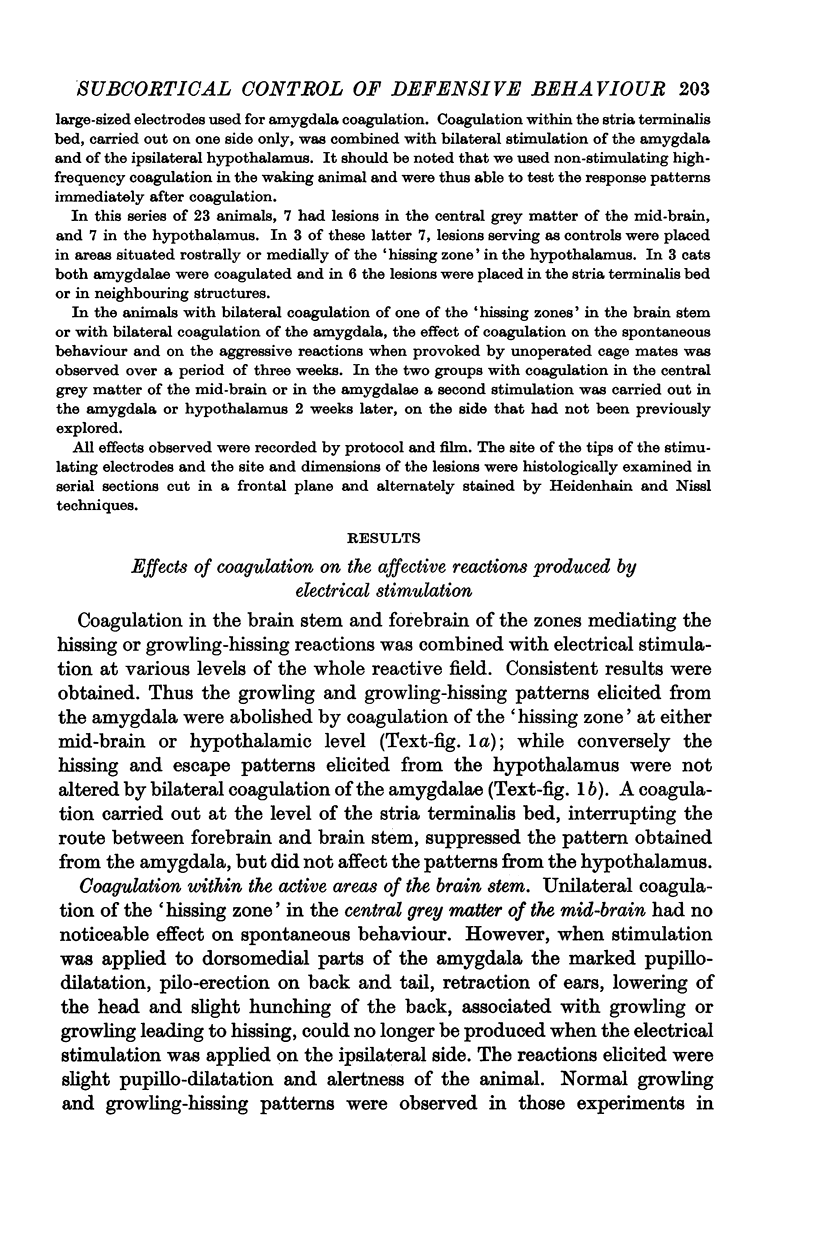
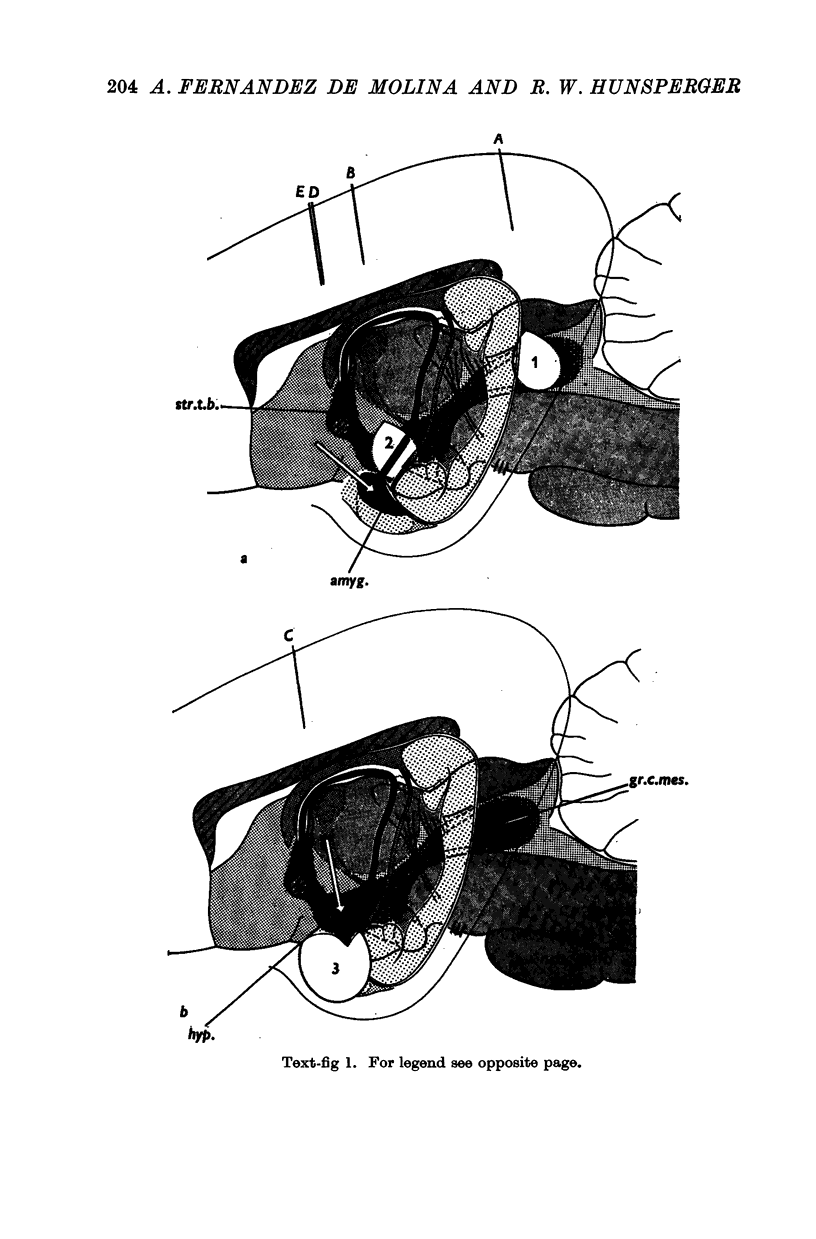
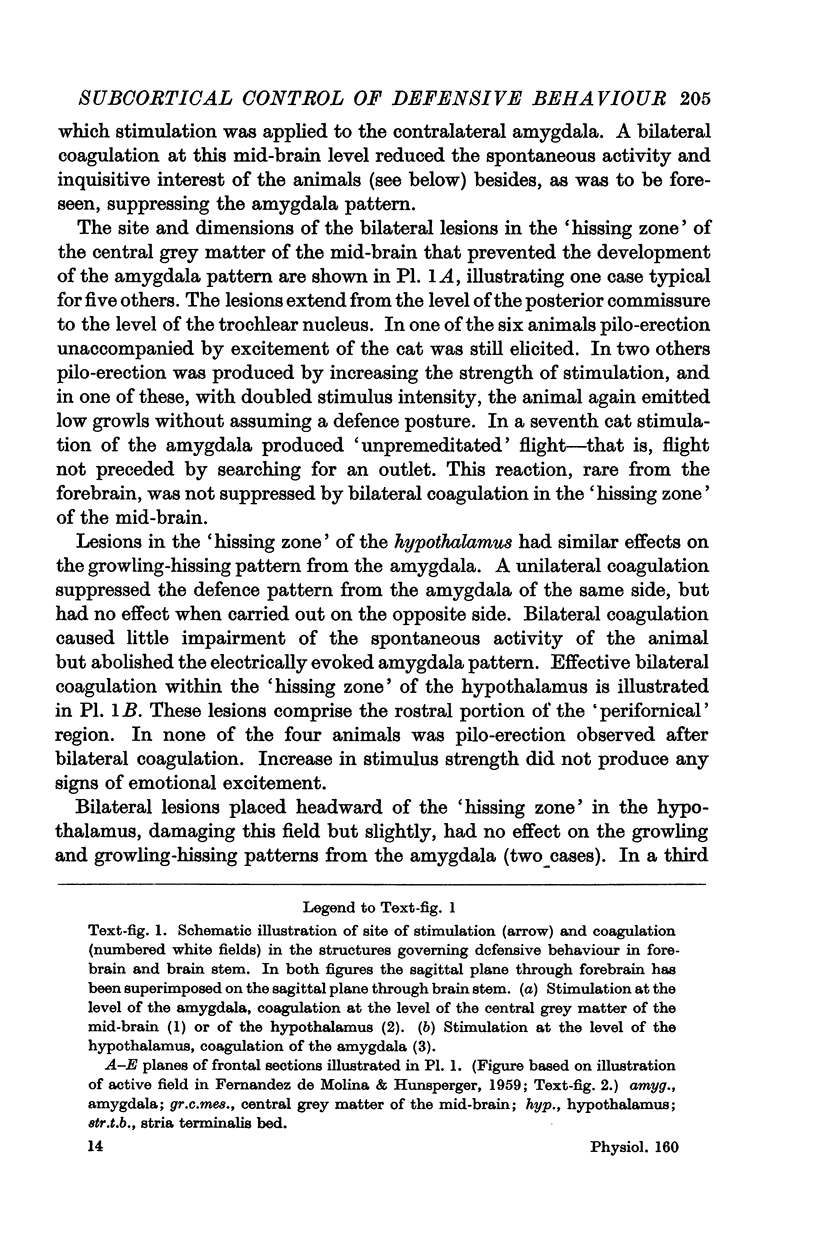
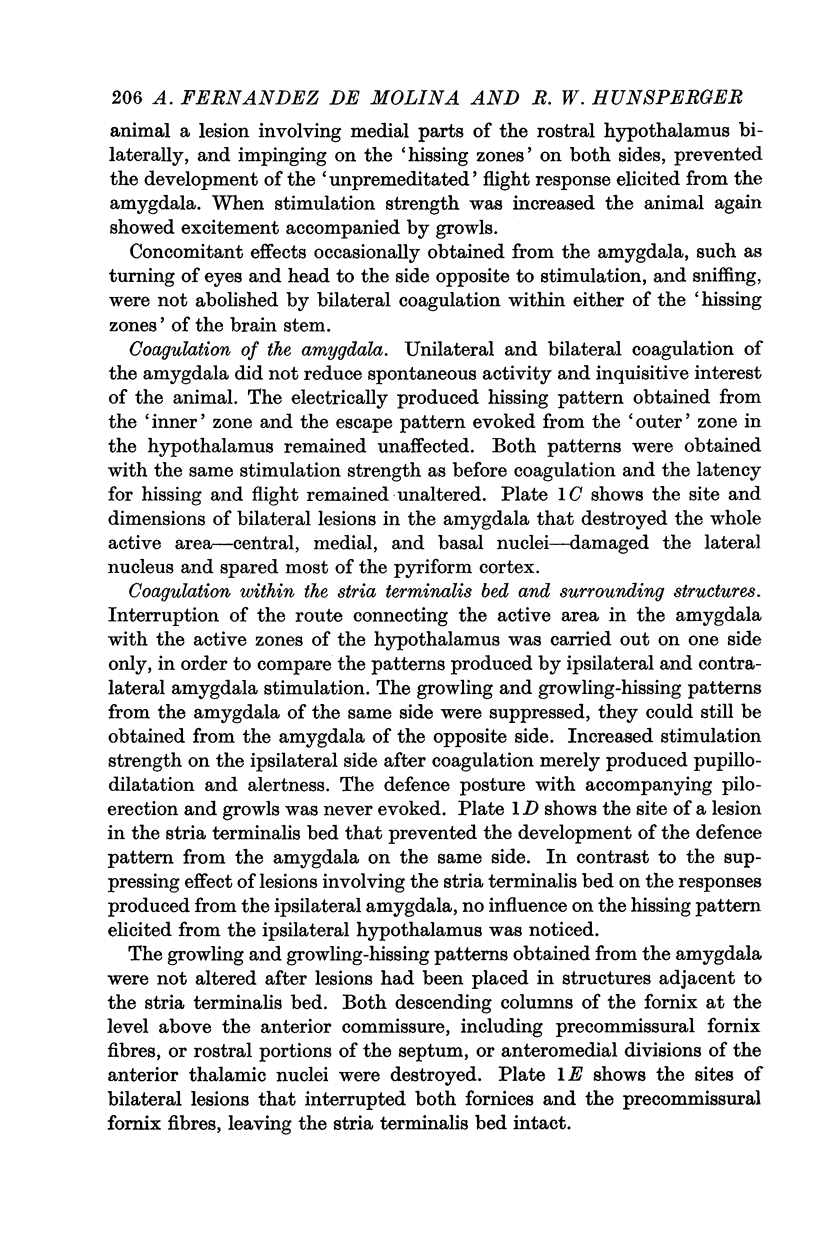

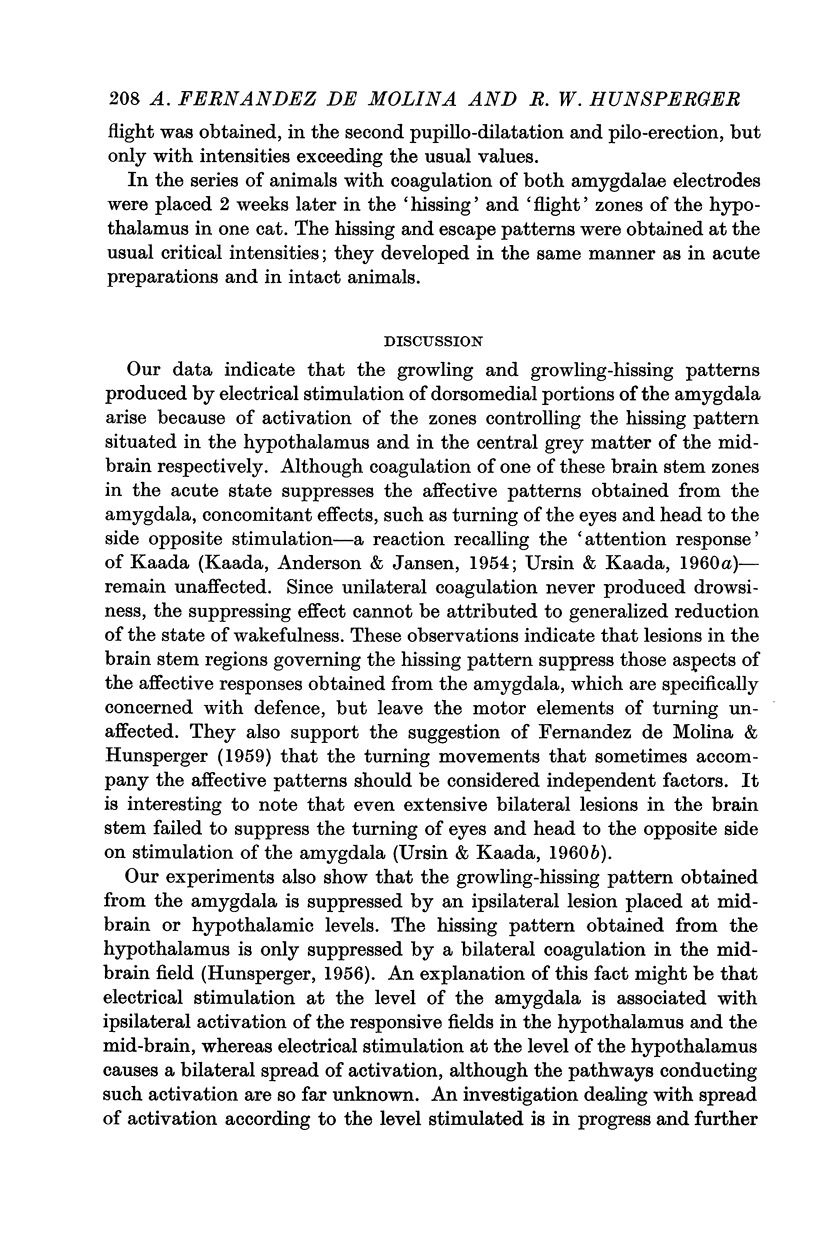
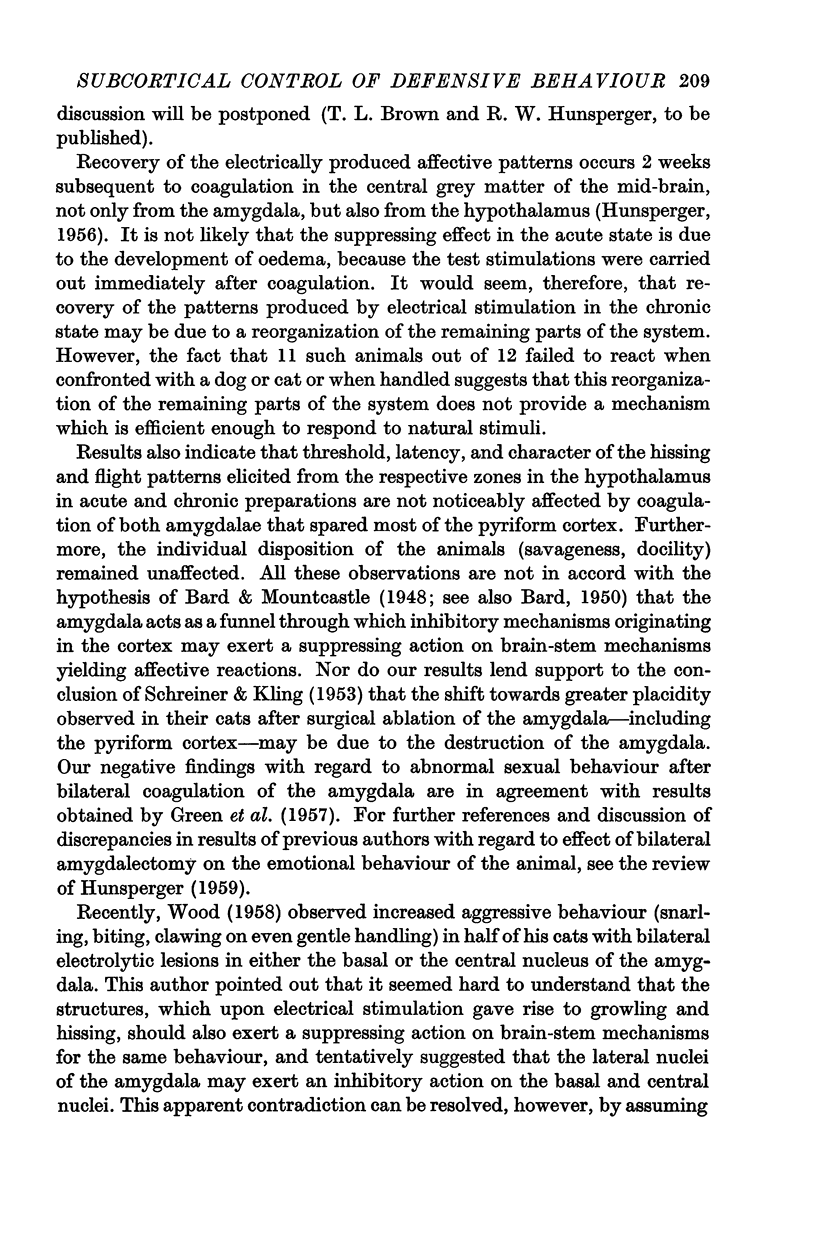
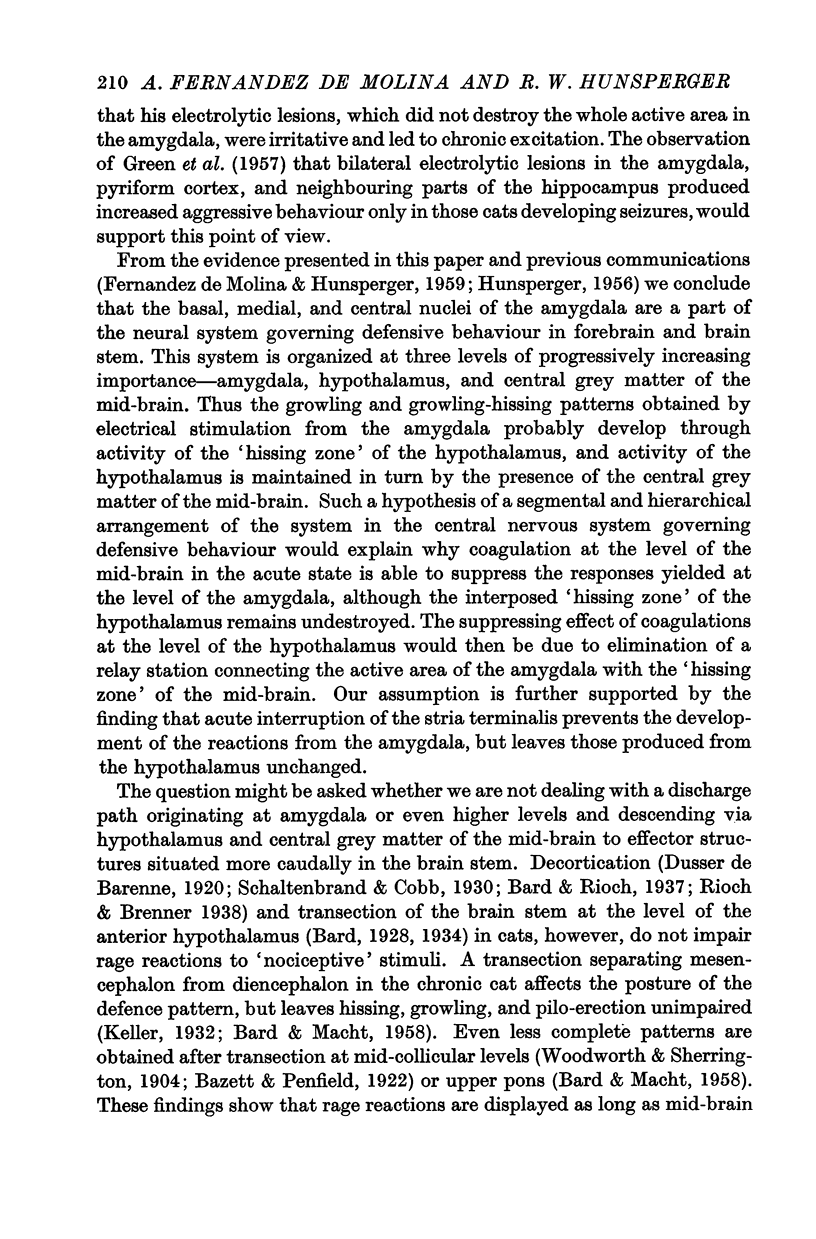
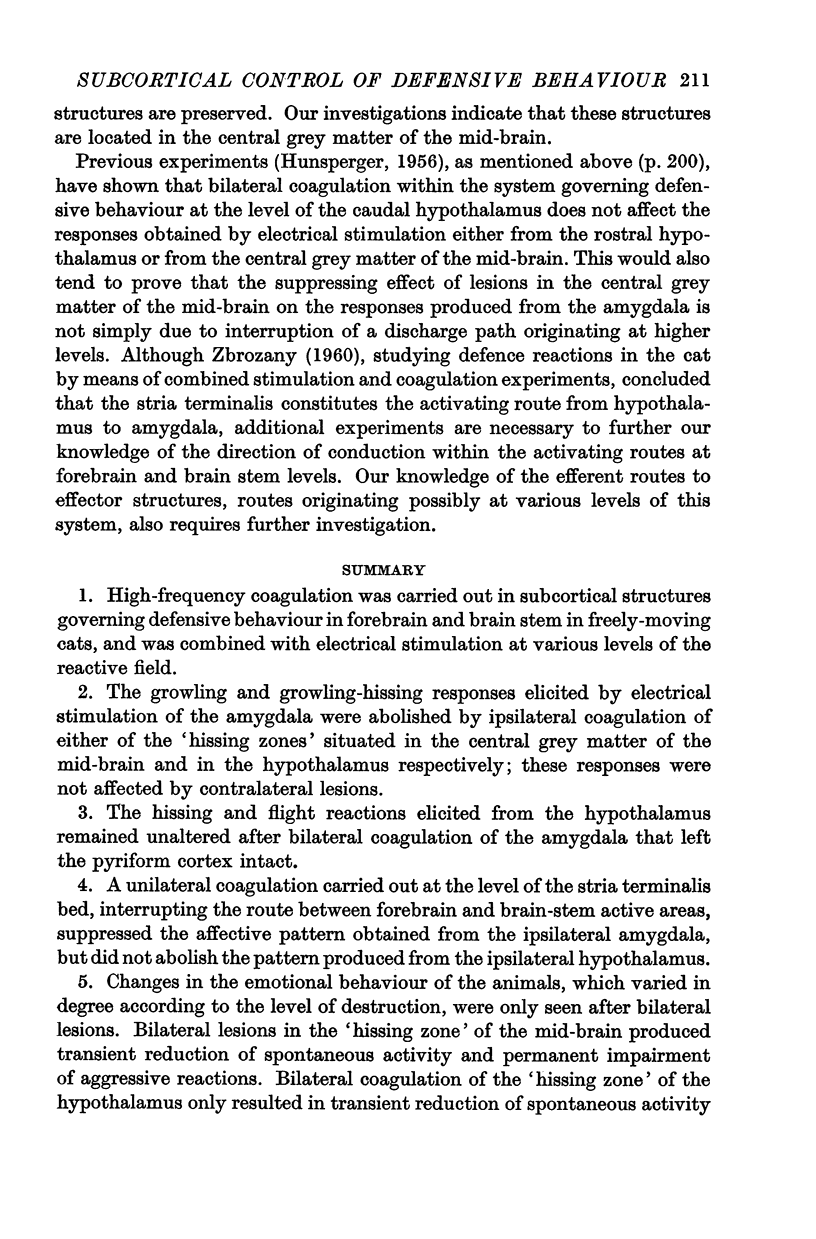
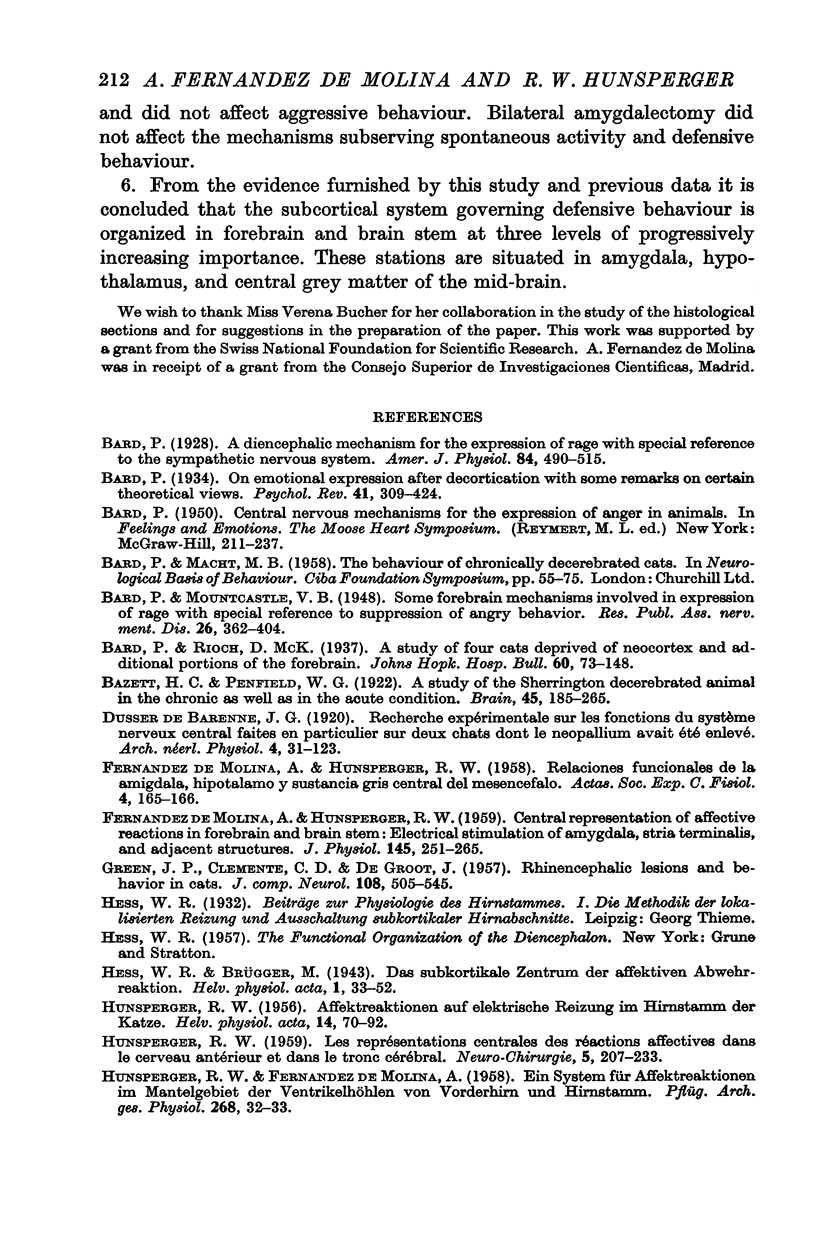
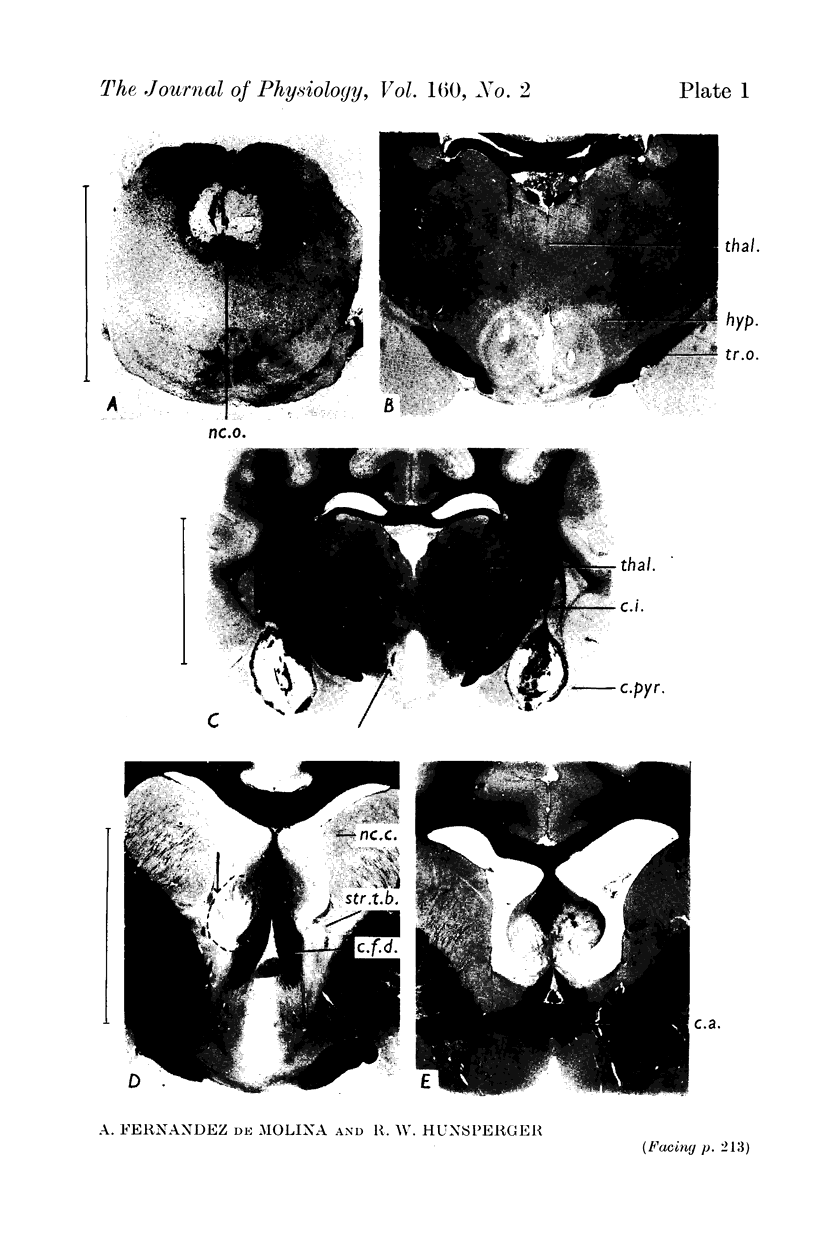
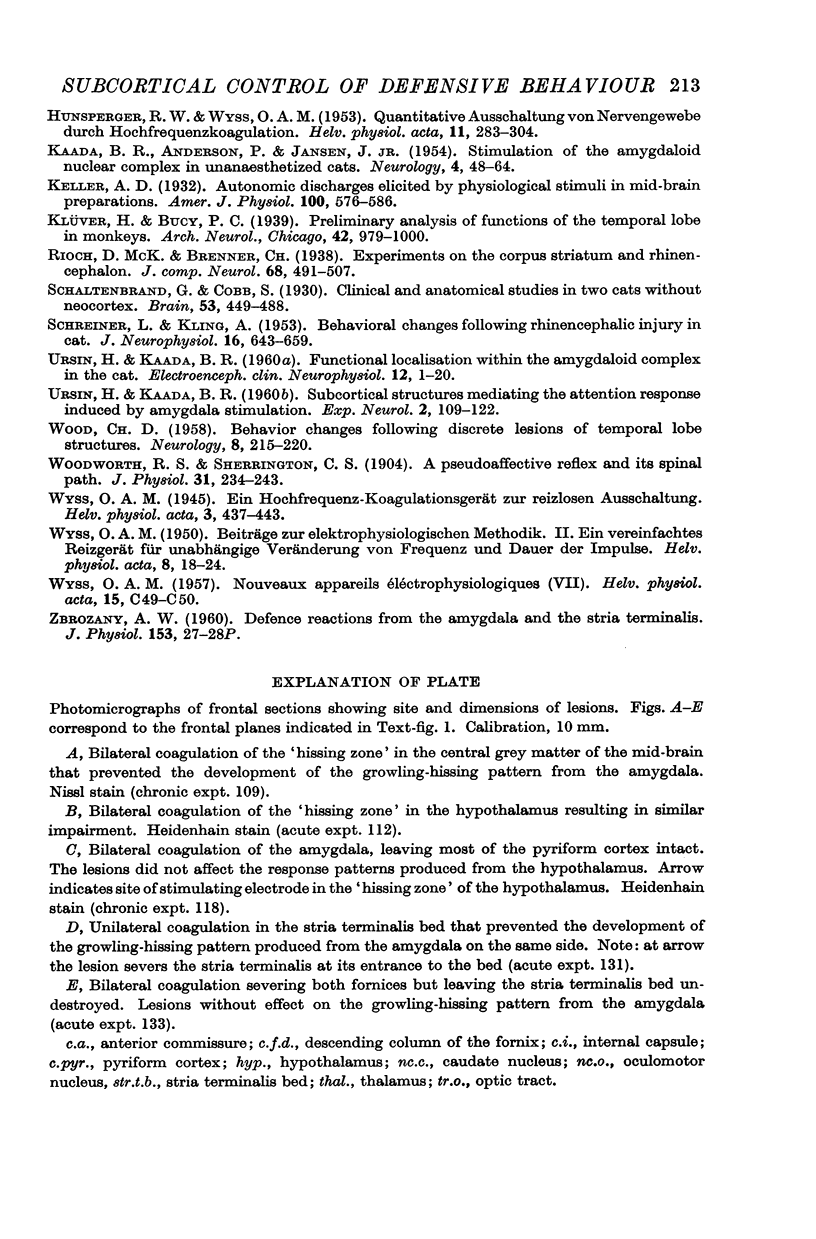
Images in this article
Selected References
These references are in PubMed. This may not be the complete list of references from this article.
- FERNANDEZ DE MOLINA A., HUNSPERGER R. W. Central representation of affective reactions in forebrain and brain stem: electrical stimulation of amygdala, stria terminalis, and adjacent structures. J Physiol. 1959 Mar 3;145(2):251–265. doi: 10.1113/jphysiol.1959.sp006140. [DOI] [PMC free article] [PubMed] [Google Scholar]
- GREEN J. D., CLEMENTE C. D., DE GROOT J. Rhinencephalic lesions and behavior in cats: an analysis of the Kluver-Bucy syndrome with particular reference to normal and abnormal sexual behavior. J Comp Neurol. 1957 Dec;108(3):505–545. doi: 10.1002/cne.901080308. [DOI] [PubMed] [Google Scholar]
- HUNSPERGER R. W. Affektreaktionen auf elektrische Reizung im Hirnstamm der Katze. Helv Physiol Pharmacol Acta. 1956;14(1):70–92. [PubMed] [Google Scholar]
- HUNSPERGER R. W., WYSS O. A. M. Quantitative Ausschaltung von Nervengewebe durch Hochfrequenzkoagulation. Helv Physiol Pharmacol Acta. 1953;11(3):283–304. [PubMed] [Google Scholar]
- KAADA B. R., ANDERSEN P., JANSEN J., Jr Stimulation of the amygdaloid nuclear complex in unanesthetized cats. Neurology. 1954 Jan;4(1):48–64. doi: 10.1212/wnl.4.1.48. [DOI] [PubMed] [Google Scholar]
- SCHREINER L., KLING A. Behavioral changes following rhinencephalic injury in cat. J Neurophysiol. 1953 Nov;16(6):643–659. doi: 10.1152/jn.1953.16.6.643. [DOI] [PubMed] [Google Scholar]
- URSIN H., KAADA B. R. Functional localization within the amygdaloid complex in the cat. Electroencephalogr Clin Neurophysiol. 1960 Feb;12:1–20. doi: 10.1016/0013-4694(60)90058-4. [DOI] [PubMed] [Google Scholar]
- WOOD C. D. Behavioral changes following discrete lesions of temporal lobe structures. Neurology. 1958 Mar;8(3):215–220. doi: 10.1212/wnl.8.3.215. [DOI] [PubMed] [Google Scholar]
- Woodworth R. S., Sherrington C. S. A pseudaffective reflex and its spinal path. J Physiol. 1904 Jun 30;31(3-4):234–243. doi: 10.1113/jphysiol.1904.sp001034. [DOI] [PMC free article] [PubMed] [Google Scholar]



